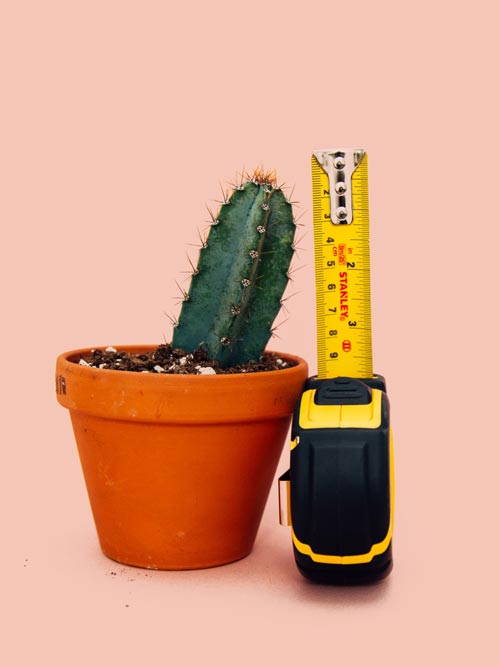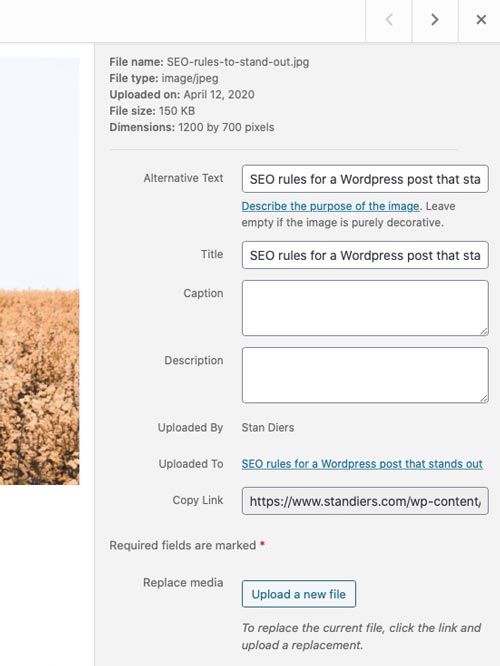SEO rules for a WordPress post that stands out

You write good posts for your website, but they don’t really seem to get traction? One of the things you can try to improve is the SEO. There are good basic SEO rules to follow that will help your post stand out more.
So we all know SEO stands for Search Engine Optimisation. It means that we don’t necessary write in an optimised way in the sense that despite creating interesting posts, they may not necessarily have the right shape to be found on searches. That’s okay, it isn’t exactly the same as usual writing, we all do those mistakes. Here I will list out the 8 SEO rules that will improve greatly your post ranking.

Find your Keyphrase
Think of your Keyphrase as your theme or topic. It doesn’t matter if your post is short and simple, or long and complex. You can always find the root topic behind it. It helps to think of your post as the answer to a question your audience is searching for. Then logically your keyphrase will be the essence of that question and you will use it as a beacon telling searches “look here, I have the answer”! Note: it can be a single word, or a set of words without punctuation. It must not be used on other posts, as you don’t want to compete between your posts, that’s probably the golden rule or SEO rules!

Keyphrase in Title & Slug
Now that you have your key phrase, you must remember to include in right into your post title and slug. If you think of it rationally, it makes sense to do that. If people are looking for the answer of a question, they will most likely want to see the root of their search directly in the title of what they will click. At least that is how Google and other search engine think. The topic of your post must appear on the title of the post. To help them, you also must include it in the last part of the URL called the slug.
Note: it is best to put your key phrase at the start of your title. I know it is not always easy or natural, but it helps.

Consider your 1st Paragraph
You know how people have short attention span. Well you need to keep their attention within the 1st paragraph of your post. In other words, they should get the answer to their question right there. For this, you must include the keyphrase right at the beginning and provide them with what they are looking for. You will use the rest of your post developing your idea or theme.
Note: One good way to do this is to clearly say what they will find in the post if the full “answer” is not possible.

Minimum 300 Words
You should not write a post shorter than 300 words. For that length you should consider repeating naturally your keyphrase twice in the whole post. But consider writing more content, and developing your topic more. That will give you more room to be found. For much longer posts, it is recommended to use the key phrase more often but not overly used too.
In general avoid writing paragraphs of more than 150 words. It is best to have many short paragraph, rather than fewer longer ones. People tends to skip longer reads, especially online.

Active voice is better
You should alway favour active voice in your article. This way your writing is more personal, direct and has more punch. So for example, you would prefer to say: “I design logos for clients in the hotel industry” rather than “The hotel industry is one of my clients for logo design”.
I think the general rule is 80% active, 20% passive max. One way to avoid passive voice is to make shorter sentences and split your idea into more sentences. This will ensure punchier copywriting.

SEO Title & Meta description
In another article, I recommend Yoast SEO wordpress plugin. You can use it to easily set SEO titles and meta descriptions. They are not exactly the same as your post title by the way. They are what search engine can pick up to display your entry in the list of results. In general you have the Title, the URL, the description and possibly an image on the side if you are on mobile.
The SEO Title should not be too short but if your post title is good enough then this should be enough to be your SEO Title. Not to forget it is best to also include your site title at the end of it. So something like Post Title + Site Title = SEO Title.
For sure you must include your keyphrase in both the SEO Title and meta description. The description should be around the 156 words maximum. Try to make it exactly that, as too short is not good and too long will not be seen in full.

Internal & External links
There is nothing worst than a “dead-end” post. That means your audience will feel better if they see links within your post. That helps building up confidence in what you say. Those links should be both within your site as well as outbound links.
Internal links will have the benefit of redirecting people to different place of your site. It is like a contextual navigation. People like that as it is a more natural way to introduce another part of your site and guide them to it. Search engine value this a lot too, it helps them understand the structure of your site.
External links will send people to another sites opening yours to a “highway of knowledge” rather than trapping people within your world only. This is what help the flow of information through the internet, and give your audience plenty of ways to access information about things you discuss. That’s the trust and confidence part mentioned earlier. Consider those external links as useful resources for your audience and send them to them in new tabs (so they don’t loose your site).
Note: Never place an external link on your keyphrase. You do not want to send people away on the very things they came to you for.
Here you go, if you apply those 8 simple SEO rules to your posts you have more chances to boost their discovery. For sure these are not the only things that compose SEO in general, but they are simple things you can implement to help your site grow. I use a free plugin for WordPress called Yoast SEO. It is very popular and used by million of other people like you. Once this is done, you will also need to consider the topics of your posts, the way you share them, etc…
Feel free to contact me to discuss your project if you feel you need a freelance graphic designer to help you achieve your goal. I am a freelance graphic designer in Hong Kong, building quality branding across media, from print to digital.
Read more on this topic:
The length of your focus key phrase by Yoast SEO.
7 SEO rules every marketer should know by Semrush.
Search Engine Optimization by Google.
Beginner’s guide to SEO by Moz.com.
* images from Unsplash.com


